This Old House: Transforming Centre Block is a work in progress
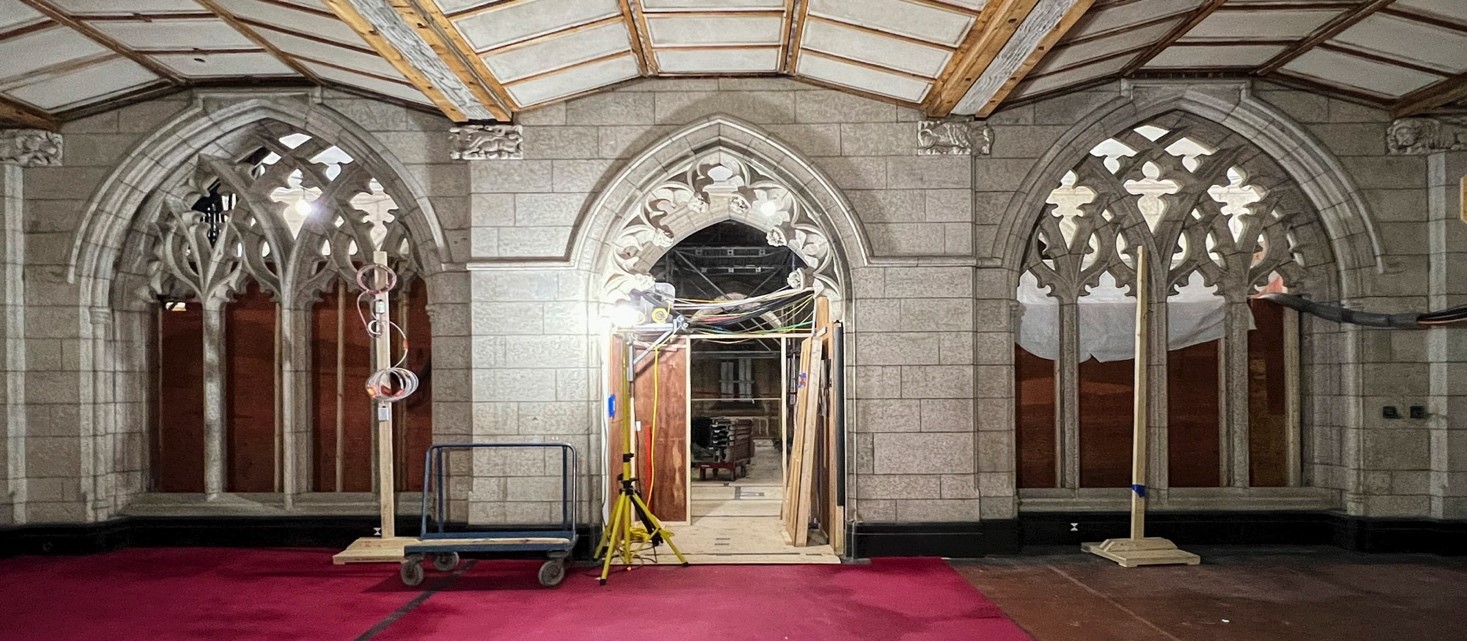
In February 2019, the Senate moved to the Senate of Canada Building, a former train station built in 1912. The Senate will occupy this temporary location while Parliament’s Centre Block — the Senate’s permanent home — is rehabilitated.
Although Centre Block is shuttered for rehabilitation work, Canadians can still experience its art and architecture through the Senate’s immersive virtual tour.
Centre Block on Parliament Hill is one of Canada’s most iconic buildings — but these days, it’s almost unrecognizable.
Thanks to a large-scale rehabilitation project, overseen in part by the Senate’s Subcommittee on Long Term Vision and Plan, the century-old building is being brought up to modern safety, accessibility and sustainability standards so it can continue to serve Canadians for decades to come.
Given the extensive and structural nature of the rehabilitation, many of Centre Block’s most recognizable heritage features and treasures — including artwork, sculptures, furniture, woodwork and stained glass — have been temporarily removed and stored for safekeeping. Some items have undergone restoration work by skilled conservators.
The building has been closed for business since late 2018, but the Senate and parliamentary partners have been documenting the wide range of rehabilitation and conservation projects taking place — projects led by Public Services and Procurement Canada.
Here are some behind-the-scenes snapshots of the transformation underway in Centre Block’s Senate spaces:
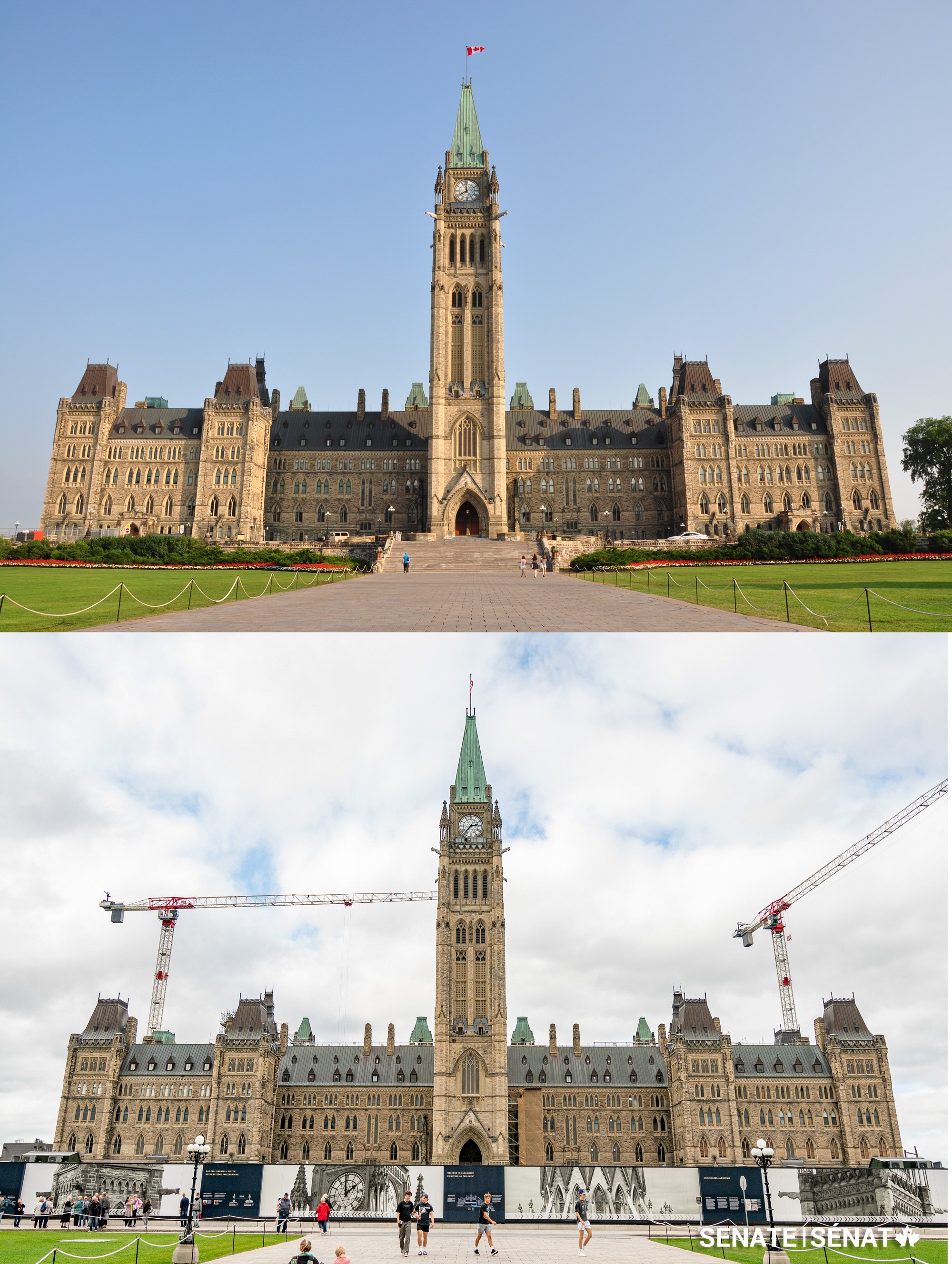 Parliament Hill is a hub of construction activity. One of the first orders of business in Centre Block’s rehabilitation is to upgrade this historic building to meet modern seismic standards. Crews are also excavating the lawn in front of Centre Block to build an underground Parliament Welcome Centre.
Parliament Hill is a hub of construction activity. One of the first orders of business in Centre Block’s rehabilitation is to upgrade this historic building to meet modern seismic standards. Crews are also excavating the lawn in front of Centre Block to build an underground Parliament Welcome Centre.
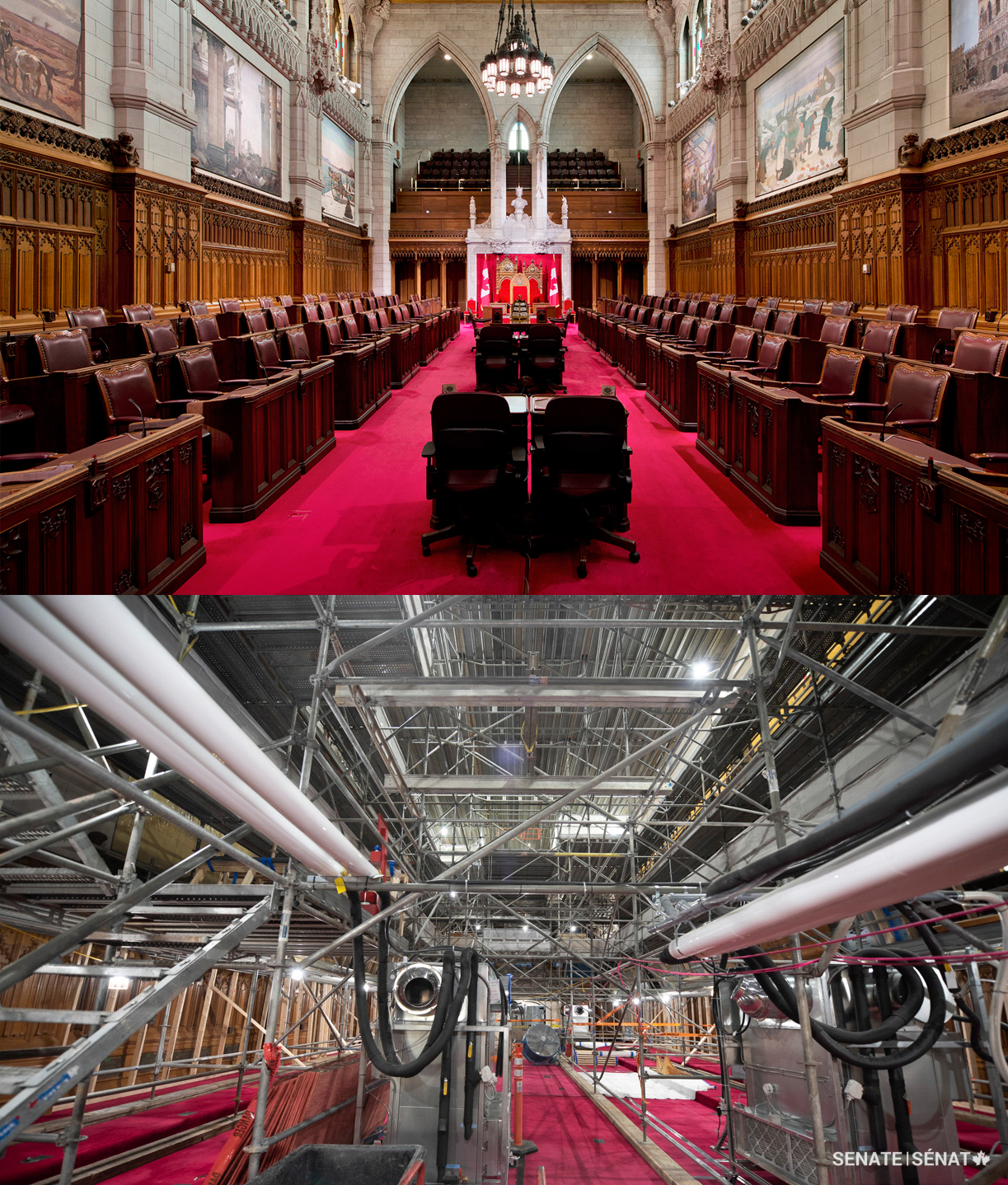 Save for the telltale red carpet, the Senate Chamber is nearly unrecognizable amidst floor-to-ceiling scaffolding! Senators’ desks were moved to the Upper Chamber’s temporary home and refurbished, the large war paintings have been safely stored, the decorative woodwork has been dismantled, and the Chamber’s two massive chandeliers were taken apart and stored.
Save for the telltale red carpet, the Senate Chamber is nearly unrecognizable amidst floor-to-ceiling scaffolding! Senators’ desks were moved to the Upper Chamber’s temporary home and refurbished, the large war paintings have been safely stored, the decorative woodwork has been dismantled, and the Chamber’s two massive chandeliers were taken apart and stored.
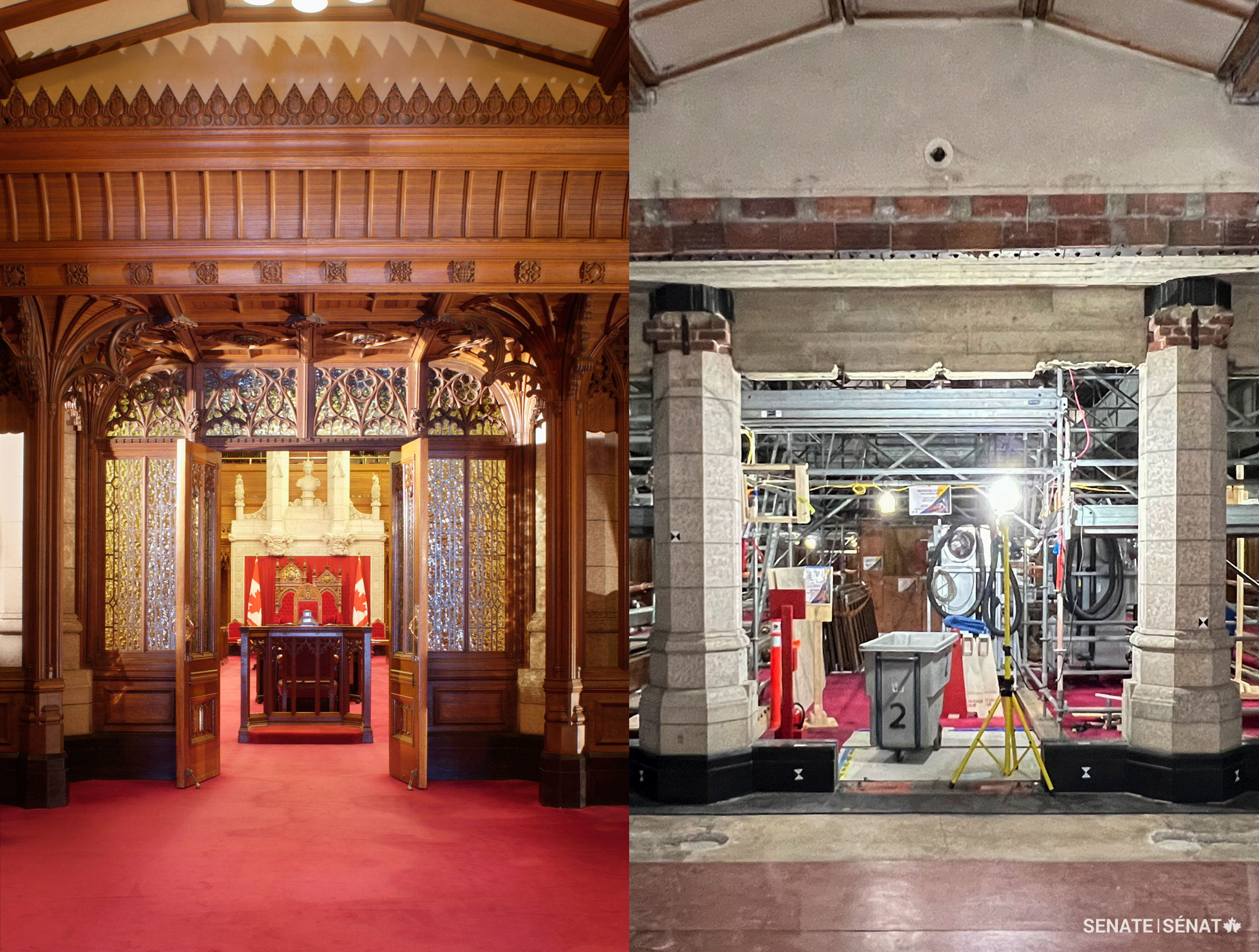 The decorative woodwork, privacy glass windows and signature red carpet have been temporarily removed from the Senate antechamber, the small waiting room that connects the Senate foyer and the Senate Chamber. Much of the Senate’s interior woodwork was carved by craftsman Elzéar Soucy and his team in the 1920s.
The decorative woodwork, privacy glass windows and signature red carpet have been temporarily removed from the Senate antechamber, the small waiting room that connects the Senate foyer and the Senate Chamber. Much of the Senate’s interior woodwork was carved by craftsman Elzéar Soucy and his team in the 1920s.
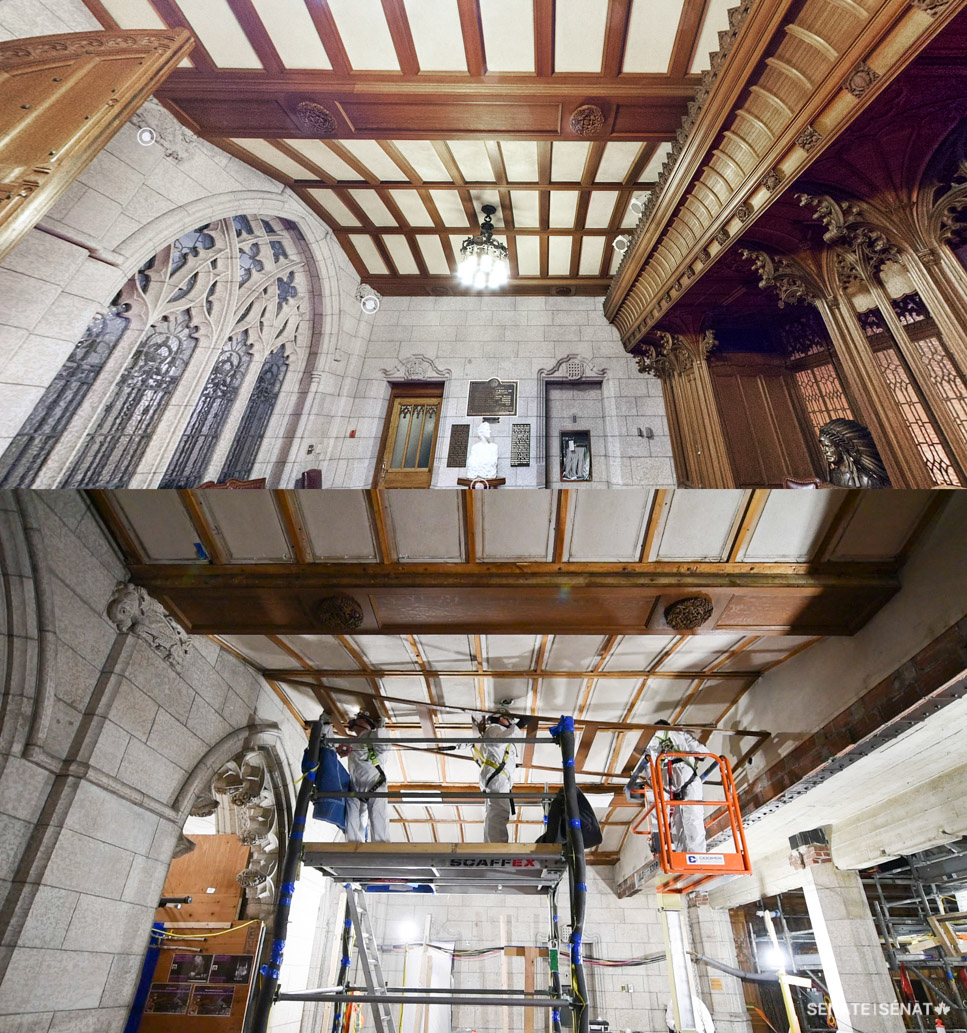 Perched on a scaffold and an electric lift, workers dismantle the wood panels that normally line the Senate antechamber ceiling, leaving behind exposed stone, brick and concrete.
Perched on a scaffold and an electric lift, workers dismantle the wood panels that normally line the Senate antechamber ceiling, leaving behind exposed stone, brick and concrete.
 The Senate antechamber has been stripped of all its heritage treasures, including the hand-carved doors, furniture, lighting fixtures and glass windows. The antechamber doors were transferred to the Senate of Canada Building, the Upper Chamber’s temporary home, where they are on display in the outer antechamber.
The Senate antechamber has been stripped of all its heritage treasures, including the hand-carved doors, furniture, lighting fixtures and glass windows. The antechamber doors were transferred to the Senate of Canada Building, the Upper Chamber’s temporary home, where they are on display in the outer antechamber.
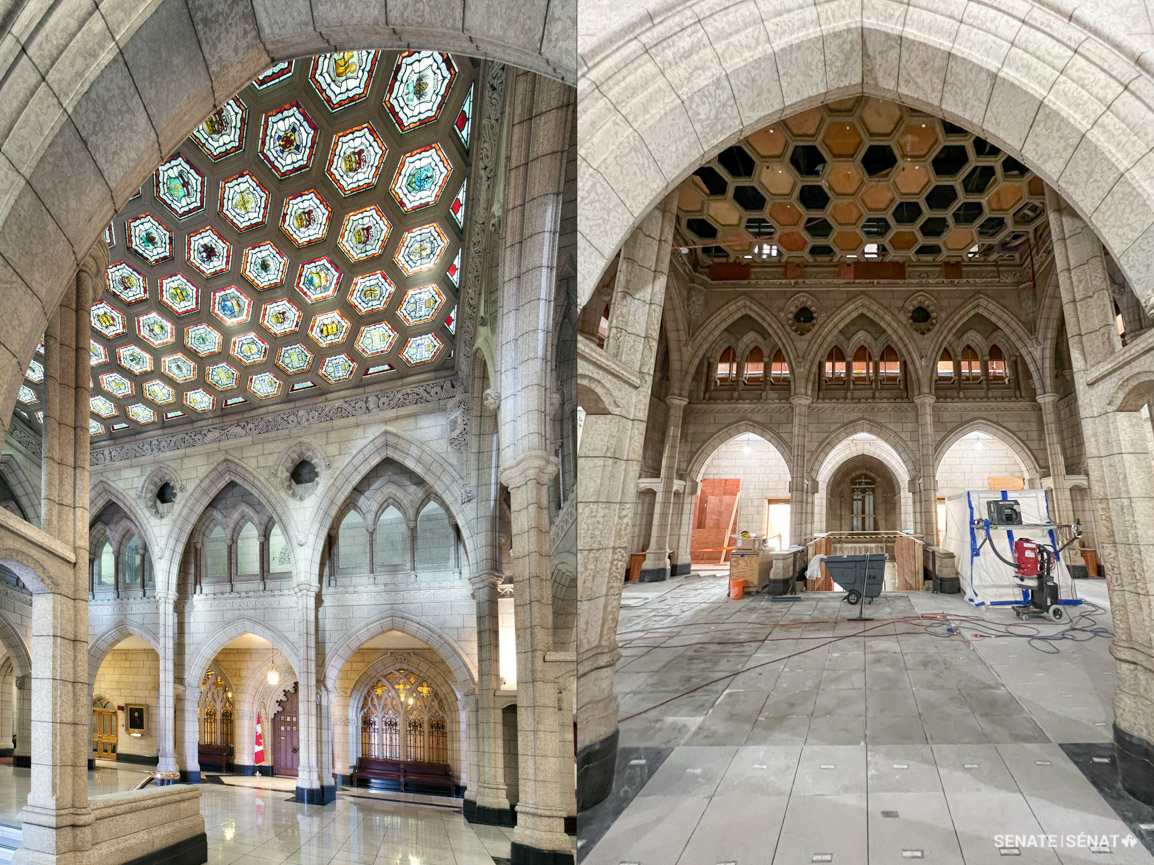 The ceiling of the Senate foyer is made up of 105 hexagonal stained-glass panels, known as “laylights,” that help illuminate the pointed arches, soaring columns and royal portraits normally found in this distinguished space. Many of the laylights depict symbols of the European cultures that contributed to Canada’s founding, and the names of all the Senate speakers until 1920. The fragile panels were carefully removed, traced, photographed, wrapped and stored for protection.
The ceiling of the Senate foyer is made up of 105 hexagonal stained-glass panels, known as “laylights,” that help illuminate the pointed arches, soaring columns and royal portraits normally found in this distinguished space. Many of the laylights depict symbols of the European cultures that contributed to Canada’s founding, and the names of all the Senate speakers until 1920. The fragile panels were carefully removed, traced, photographed, wrapped and stored for protection.
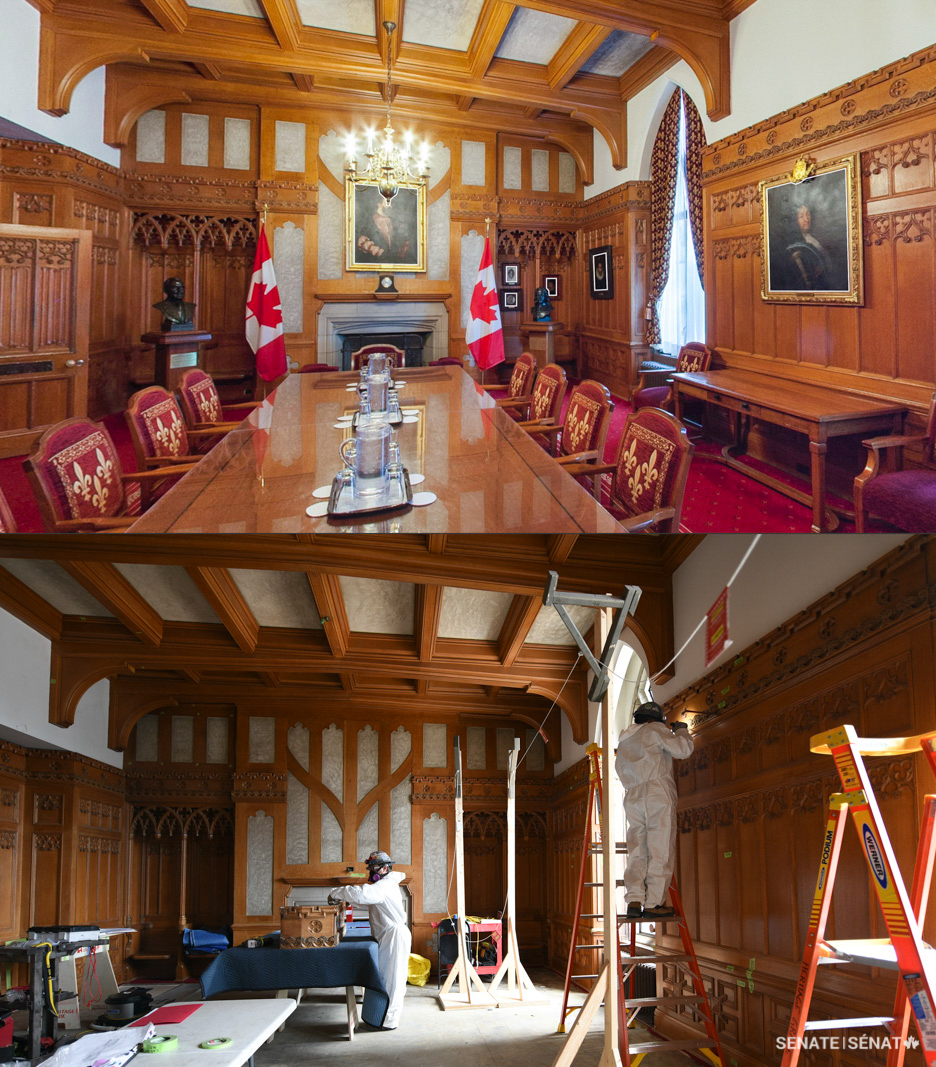 The Salon de la Francophonie is an elegant room dedicated to Canada’s association with the international union of French-speaking countries. Originally a smoking room for senators, the space was redesignated to host Senate receptions and redecorated to reflect the period of French rule in what is now Canada. The salon, too, has been emptied of its furnishings and artwork. The portraits of French monarchs donated by former senator Serge Joyal were moved to the Senate of Canada Building.
The Salon de la Francophonie is an elegant room dedicated to Canada’s association with the international union of French-speaking countries. Originally a smoking room for senators, the space was redesignated to host Senate receptions and redecorated to reflect the period of French rule in what is now Canada. The salon, too, has been emptied of its furnishings and artwork. The portraits of French monarchs donated by former senator Serge Joyal were moved to the Senate of Canada Building.


